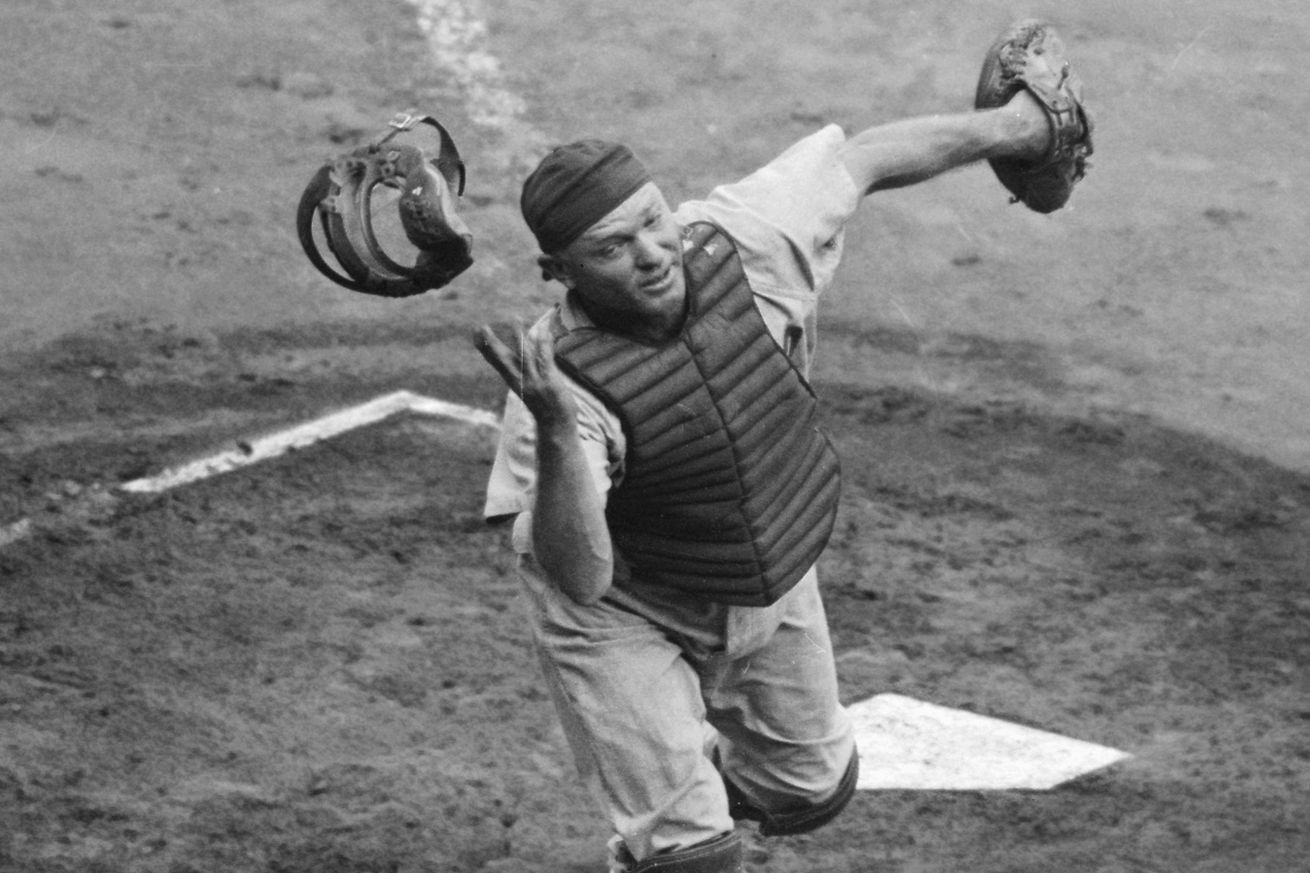
The Cubs played well this year — but didn’t do much to improve the team in-season.
In 1952, the Cubs finished 77-77 — the only year between 1947 and 1962 that they didn’t have a losing record. (And they had to win four of their last five to finish at .500.)
They got off to a great start and were 34-19 entering the then-trade deadline of June 15, tied for second place, four games behind the high-flying Dodgers, who were an otherworldly 37-14. The Cubs had won 10 of their last 11. I’m including one non-player-for-player deal below because even with that really good record — the only time between 1947 and 1963 they were over .500 that late in the season — they did almost nothing to improve the team at the deadline. The Cubs’ good play that year was largely due to Hank Sauer, who batted .270/.361/.531, led the NL with 37 home runs and 121 RBI, and was named league MVP.
The Dodgers would go on to win the 1952 NL pennant with a 96-57 record. The Cubs would finish fifth, 19½ games out of first place.
January 3: Acquired Willie Ramsdell from the Reds for Frank Hiller
Hiller had pitched well for the Cubs in 1951, less so in ‘52, and so was deemed expendable. He had an okay year for the Reds (0.3 bWAR), pitched for the Giants in ‘53, then was out of baseball after 1954.
Ramsdell led the major leagues in losses in 1951, but his peripherals made it a 2.1 bWAR season — not that anyone knew what WAR was in 1951. He was 35, so who knows what the Cubs were thinking here. He posted a 2.42 ERA in 19 games (four starts) for the Cubs in ‘52, not a bad year (1.8 bWAR), but the Cubs shipped him to the minors mid-season. His only claim to fame as a Cub was that on June 19, he relieved Warren Hacker after Hacker had been pounded for four runs in fewer than two innings. In 6⅔ innings he allowed just one more run, but that was the day that Carl Erskine of the Dodgers no-hit the Cubs, the first time they’d been no-hit in 35 years.
The Cubs got a bit more value from this deal, but it still didn’t mean much.
June 15: Acquired Tommy Brown from the Phillies for cash considerations
Brown had been one of the teenagers who replaced guys off fighting World War II when he played part of the 1944 season for the Dodgers at age 16. A part-time player in Brooklyn for most of the next several seasons, he got swapped to the Phillies in 1951, then got off to a bad start in ‘52, and the Cubs got him.
Truth be told, he played well for the Cubs, batting .320/.358/.420 in 61 games. But when he hit poorly the following year, the Cubs sent him to their minor league affiliate in Los Angeles and eventually sent him to another minor-league team (Nashville of the Southern Association), where he was still playing as late as 1959.
It’s just surprising that this was the only Cubs move at the trade deadline in a year where they could have possibly done better.
December 3: Acquired Clyde McCullough from the Pirates for Dick Manville and $25,000
McCullough had been a Cubs catcher from 1940-48, though he missed a couple of years in that span for World War II service. That included missing the entire 1945 regular season, though he returned to have a single at-bat in the World Series.
They sent him to the Pirates in a deal we’ll discuss later in this series. Why they wanted him back at age 36 is beyond me. McCullough played parts of the next four seasons with the Cubs as a backup catcher, posting a total of -0.3 bWAR.
Manville never played in the majors again after 1952. According to his baseball-reference page, he attended both Harvard and Yale, and at Yale he was a teammate of George H.W. Bush. This page says he had quite the life after baseball:
He met his wife, Elaine, on a California golf course, and the two would be married for 60 years. Together, they raised cotton in Nevada, bought a furniture store in Iowa, adopted one son and had another. The family moved to Ann Arbor, Mich., where Elaine was an interior designer and Dick was the president of the Chamber of Commerce. The couple retired to Florida in 1976, where he owned and operated furniture stores in the Tampa and Orlando areas.
Incidentally, $25,000 back then is roughly equivalent to $300,000 today, so I’d say the Cubs got the worse of that deal.
And, McCullough eventually became a coach, but not for the Cubs. He worked for the Washington Senators/Minnesota Twins (1960–61), New York Mets (1963) and San Diego Padres (1982), and also managed in the Mets minor-league system for much of the 1960s. In 1982, McCullough was serving as the Padres’ bullpen coach when he was found dead Sept. 18 in his San Francisco hotel room. He was 65.
December 20: Acquired Sheldon Jones from the Braves for Monk Dubiel
The Cubs seem to have liked trading with the Braves in the 1950s; this is one of many trades I’ve already mentioned in this series.
Neither of these men appeared in a single major-league game after 1952. So … a trade that meant nothing.
I will say that “Monk Dubiel” is a great baseball name.
I’ll give these a C- because while the Cubs didn’t get much help in these trades, none of them really hurt the team either.
